Susan Appleyard's Blog, page 17
August 4, 2016
Characters in Motion with Derek Birks
The books of Derek Birks on Layered Pages.
From the Rebels and Brothers series… may I introduce Lady Eleanor Elder – the she-wolf who never stops moving.
As Paul Bennett, of the Hoover Book Review, remarked on Facebook recently: “Eleanor Elder has to be one of the toughest women in fiction.”
Eleanor has proven to be one of the most popular characters in the Rebels and Brothers series, set during the Wars of the Roses. Perhaps that is because she embodies the fighting spirit but also because the reader just knows that, when Eleanor is there, something unpredictable and exciting is going to happen. She is prone to outbursts of spectacular anger but she is also frighteningly and somehow, endearingly, loyal.
With stark red hair and piercing green eyes, hers is a stunning, but harsh, beauty. It is indeed a mesmerising beauty, but it masks a tortured soul for Eleanor is a fundamentally flawed character. Eleanor is fierce…
View original post 1,497 more words


August 3, 2016
Book Corner: Forgotten History by Jem Duducu
A fascinating book reviewed by Sharon Bennett Connolly
 History... the interesting bits!
History... the interesting bits!
Not all history is recorded in school textbooks or cast into towering monuments that shape city skylines. Quite often the most intriguing (and most bizarre) bits are forgotten and fall away into obscurity. In this fascinating book, Jem Duducu shines light on the almost forgotten, wonderfully strange, and often hilarious moments of history that would otherwise be lost forever.
Covering a wide variety of topics, from the time a Pope put his dead predecessor on trial all the way up to the awkward moment when the US Air Force accidentally dropped nuclear bombs on Spain, take a journey through time and discover the weird and wonderful history that you didn’t learn about in school.
Forgotten History: Unbelievable Moments From thePast by Jem Duducu is one of those wonderful books that you simply can’t put down. When it arrived through my door I decided ‘I’ll just have a peek’…
View original post 498 more words


July 30, 2016
Cruelly jilted – Sophie Charlotte
By whom you may wonder? I will come to that.
Sophie was born at the family castle of Possenhofen in Bavaria on February 23rd 1847, the fourth and last daughter of Duke Maximilian and Duchess Ludovika. After her older sisters were married into imperial or royal houses, her parents sought a good match for Sophie.
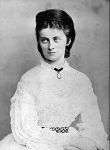 Sophie Charlotte of Bavaria
Sophie Charlotte of BavariaSophie managed to catch the interest of the most eligible bachelor in Bavaria: King Ludwig II. They probably knew each other well, as both families had summer homes on Lake Starnberg, the two were close in age and mixed freely. Sophie must have thought herself the luckiest girl in the world, for Ludwig was tall, dark and handsome, well-educated, refined, intelligent, and with an unblemished reputation. Furthermore, she would not have to leave Bavaria and her parents to live in a foreign country. They became engaged on January 22nd 1867.
The trouble with Ludwig, as Sophie discovered before the engagement was far advanced, was that he loved Richard Wagner far more than he did his fiancee, as his letters to the two of them show. Wagner received the tenderest of endearments, the most profound outpourings of his heart, while the letters to Sophie were perfunctory and often conveyed Ludwig’s adoration of the composer almost as a god.
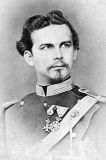 Ludwig II
Ludwig IIThe marriage was supposed to take place on August 25th, Ludwig’s twenty-second birthday. Instead, it was postponed by an official announcement until October 12th. On October 7th the wedding was again postponed until November 28th. On the 7th Ludwig wrote to Sophie. He said all the right things: that she was precious to him, that he loved her like a sister and begged for the continuance of her affection. But, he wrote, he now saw that there was not the true love which was necessary for a matrimonial union.
Sophie must have been terribly humiliated. After all, the whole of Europe had watched and sighed over the romantic attachment of this beautiful young couple. But perhaps by the end of their courtship, she agreed that true love was lacking. As it was, she was spared a great deal of grief.
No need to feel too sorry for Sophie though. It seems that shortly after the engagement was announced a photographer was called in. Naturally, there were many occasions when photographs were needed. Well, Sophie wasn’t getting much in the way of physical affection from her fiance – a chaste kiss on the forehead every now and then. When Sophie kissed him on the mouth on one occasion, he was shocked at her forwardness. Anyway, Sophie and the photographer, whose name was Edgar Hanfstaengl fell in love. They met secretly, and it is doubtful if Ludwig or even her family knew of it. We know because five love letters written by Sophie between July and September 1867 are extant.
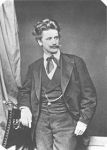 The other man
The other manOf course, it was quite impossible for Sophie to marry a mere photographer, so she may have had her heart broken but not by Ludwig.
She refused several princely suitors for her hand until she met the Duc d’Alencon, son of Louis Philippe, King of the French. They were married on September 28th 1868 and eventually had two children.
At the age of fifty, Sophie died in a fire at a bazaar in Paris, where she was doing charity work. She refused to be rescued until the girls she was working with were saved. A tragic but heroic end for the Heroine of Gaeta.
https://www.amazon.com/Gilded-Cage-Susan-Appleyard-ebook/dp/B01GW89Z8G


July 23, 2016
The Heroine of Gaeta
Today I would like to introduce another remarkable Wittelsbach. For a brief time Marie Sophie (known in the family as Madi) eclipsed her sister Sisi, the Empress of Austria, in fame.
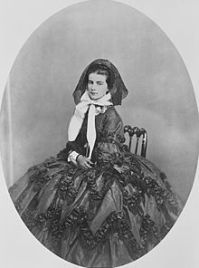 Marie Sophie Queen of the Two Sicilies
Marie Sophie Queen of the Two Sicilies
She was born at Possenhofen Castle in Bavaria on 4th October 1841. As she grew up, she became almost as great a beauty as her sister, Sisi, with great dark eyes that often seem melancholy in her pictures. When she was sixteen, her hand was sought by Francis, Crown Prince of Naples, Duke of Calabria, and eldest son and heir of Ferdinand II of the Two Sicilies. The marriage was entirely political, as the king wanted to ally himself with the Emperor of Austria, a fellow absolutist monarch. Already revolution in the form of the Italian unification movement was threatening the kingdom of Naples.
At this time, Marie had not yet begun her menses. This was a serious impediment, so she had to undergo treatments which included the use of leeches applied to her abdomen. If she was a typical girl, she must have loathed that! Also, she was expected to learn Italian. The menses began, the Italian didn’t go so well.
Quite aside from these matters, Marie can’t have been altogether thrilled at the prospect of marriage to a man she had never met, whose language she was unable to speak and who was reputed to be in delicate health, fearful of priests and the reactionary set at court, and dominated by his Habsburg stepmother. Nor was he handsome or well-educated. Furthermore, although Marie probably didn’t know it at the time, Francis was impotent. He suffered from phimosis, a condition that made intercourse painful.
On the other hand, she would be a queen, which was no small thing.
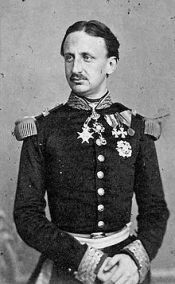 Francis II King of the Two Sicilies
Francis II King of the Two SiciliesOn 3rd February 1859, Marie was married by proxy. She then travelled to Vienna to spend some time with her sister, the Empress, who accompanied her to Trieste, where she would take leave of her family and formally enter her new country.
In Trieste, they were conducted to a large hall where a silk ribbon stretched from one wall to the other to symbolize the border between Bavaria and Naples. A large table stood under the ribbon, half in ‘Bavaria’ and half in ‘Naples’. Marie was led to a chair at the ‘Bavarian’ end of the table. The doors at each end of the hall opened to admit the two delegations accompanied by an honour guard of Neapolitan or Bavarian soldiers. Documents were exchanged across the silk ribbon and passed on to attendants. The delegates bowed to each other. The Bavarian representative spoke words of parting to Marie, and all the Bavarians filed by to kiss her hand. Then the ribbon was lowered and Marie passed into ‘Naples’.
The parting took place in the cabin of the ship that was to carry Marie away to her new husband and a land in turmoil. She was among strangers whose language she barely understood, and the only living creature with her from her home was a pet canary.
Within the year Ferdinand II was dead, and Marie’s husband became king of Naples, as Francis II. During the time of the engagement, the situation in Italy had deteriorated. Naples was threatened by Giuseppe Garibaldi and a Piedmontese army. In September 1860, with the Neapolitans ready to welcome Garibaldi’s troops, Francis II decided to abandon the city. When the flag was lowered, it signified the end of the Bourbon dynasty.
Francis and Marie fled to the coastal fortress of Gaeta. The Garibaldines were soon there, pounding the walls with their artillery. It was during this time that Marie showed her Wittelsbach mettle by rallying the defenders, caring for the wounded and challenging the enemy to come within range of the fortress’s guns. Afterward, even Garibaldi spoke admiringly of her. Proust called her ‘the soldier queen on the ramparts of Gaeta.’ Her nickname, the Heroine of Gaeta, remained with her for the rest of her life.
The outcome of the siege was inevitable. The king and queen escaped in a boat and sailed for Rome. For centuries Rome had been the centre of the Papal States, but by this time all that was left was the city of Rome itself. King Victor Emmanuel of Piedmont came down from the north to join with Garibaldi, the conqueror of the south, freeing most of Italy from Habsburg rule. Francis set up a government in exile which was recognized by some European powers, at least for a time.
The pope placed the Farnese Palace at the disposal of the exiles. They were escorted there by a contingent of papal guards. The captain of the detachment was a handsome young Belgian count who caught Marie’s eye. Or perhaps she caught his. In any case, they fell in love and a romance flowered. The vast Farnese Palace provided many trysting places for the lovers to carry on their affair. The result was inevitable. Marie became pregnant. This was a catastrophe of epic proportions, particularly for the female part of the illicit affair. Her husband’s delicate condition was too well-known for her to be able to pass the unborn child off as a Bourbon heir. The Empress of Austria’s sister – to bear an illegitimate child! The scandal! The headlines!
Marie went home to her family. Sisi was called in for her advice. It was decided that in order to avert a scandal Marie must bear her child in secret. Before her pregnancy became known she would retire to the convent of St. Ursula’s Convent in Augsberg and deliver her child. When it was over, the child would go to its father’s family to be raised, and Marie would see neither one again. With what heartache she agreed to this we can only imagine. She fell into such deep depression that her family feared for her sanity. Eventually her youth and good health restored her spirits and she decided to return to Rome and try to make her marriage work.
So it happened. No scandal was ever attached to the shining name of the Heroine of Gaeta.
A year later, with the full support of Sisi, Marie confessed the affair to her husband. He appears to have taken it very well. In fact, he finally submitted to an operation which relieved his condition and he was able to consummate the marriage. Marie became pregnant again. On 24th December 1869 a daughter was born to the overjoyed pair. This was also the birthday of the child’s aunt, Sisi, who became her Godmother.
It seems the Wittelsbachs were all born under an unlucky star. The little girl survived for only 3 months. Francis and Marie never had another.
In 1870 Rome fell to the Italian unification movement. Marie and her husband fled to Bavaria. Francis died in 1894, and Marie moved to Paris, where she established a Bourbon court-in-exile. Rumours of her activities at this time suggest that she was covertly working to destabilize the newly-formed Italy.
During World War I she was certainly active on the side of the German and Austrian Empires against Italy, once again in the hope of dividing the nation and restoring Naples. It was not to be. The nation/state of Italy had been born in war and would survive.
 Santa Chiara, Naples
Santa Chiara, Naples
Maria Sophie died in Munich in 1925, widely admired for her brave exploits. Her remains rest with those of her husband in the Church of Santa Chiara in Naples.
https://www.amazon.com/Gilded-Cage-Susan-Appleyard-ebook/dp/B01GW89Z8G


July 16, 2016
An unacceptable marriage
In the 19th century it was acceptable for a man to marry a woman who was of a lesser rank providing she was near his own station and of impeccable breeding. Imperial could marry royalty; royalty could marry aristocracy; aristocracy could marry noble etc. The social barriers were flexible only to a point. If a man had the poor judgement to fall in love with a woman of low birth – no problem. He could take her as his mistress with no stigma attached to the relationship. Which is what happened to Ludwig Wilhelm, nicknamed Louis within the family.
 Ludwig Wilhelm
Ludwig WilhelmLudwig was born on June 21st 1831, the eldest son of Duke Maximilian in Bavaria and Duchess Ludovika. He was the elder brother of Helene, of my last post, and Sisi, the Empress of Austria.
Ludwig fell in love with an actress – the lowest of the low – named Henriette Mendel. They had a daughter together, which was also acceptable according to the morals and mores of the day. When Henriette became pregnant a second time, Ludwig declared his intent to enter into a morganatic marriage with his actress/mistress. Not only the family was astounded and outraged. His father, Duke Max, who was far from being the soul of conformism, threatened to disinherit his son and heir. The King of Bavaria refused to sanction the marriage.
Sisi, another non-conformist, stood by her brother in his decision. Eventually the king relented and created Henriette Baroness Wallersee. Clearly Duke Max relented also because in the course of time Ludwig inherited the dukedom. (That may have been because Max’s second son adopted a profession – eek!)
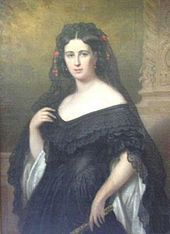 Henriette Mendel
Henriette MendelAll of Ludwig’s sisters befriended Henriette and in time she was accepted even by that most rigid of antiquated traditionalists, Emperor Franz Josef, who received her and her daughter at Schonbrunn.
Their daughter, Marie, known to history as Baroness Larisch von Moennich played such a perfidious role in the death of Crown Prince Rudolf at Mayerling that she was perpetually banished from the palaces of the imperial family.
Whether Ludwig and Henriette had a happy marriage, I can’t say – there were few of those in the family – but it was an enduring one. Henriette died in 1891. Ludwig married again the following year but they divorced in 1918. He died in 1920.
Meet the Wittelsbachs here:
https://www.amazon.com/Gilded-Cage-Susan-Appleyard-ebook/dp/B01GW89Z8G?ie=UTF8&ref_=asap_bc


July 6, 2016
The girl who lost an emperor
Sophie, Archduchess of Austria hatched a plan with her sister, Ludovika, Duchess in Bavaria for a marriage between Sophie’s son, the young and handsome Franz Josef, Emperor of Austria, to Ludovika’s eldest daughter, the beautiful Helene. Helene and her mother were invited to imperial holiday villa at Bad Ischl, ostensibly for the celebration of the emperor’s 23rd birthday, but in fact so the two could meet and, with luck, fall in love. Ludovika decided to take her 15 year-old daughter, Elisabeth along to keep Helene company and also in the hope that a match might be found for her.
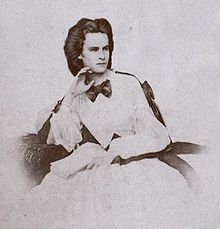 Helene of Bavaria
Helene of BavariaA match was found, all right. The Emperor showed no interest in Helene but fell head over heels for Elisabeth, known in the family as Sisi. Three days after first meeting, the young couple was engaged. Poor Helene must have at the very least felt humiliated, but she bore it with grace.
As it happened Sisi did not have a very happy life with her emperor. Helene might have thought she had a lucky escape.
At the ripe old age of twenty-two, still unmarried, and thought to be beyond marriageable age, she was considering entering a nunnery when her father Maximilian Duke in Bavaria, intervened. He invited the Thurn and Taxis family to a hunting expedition at his home, and that was when Helene met her future husband, Prince Maximilian. By the time the hunting party was over Maximilian had asked for her hand. Helene accepted and Papa gave himself a pat on the back.
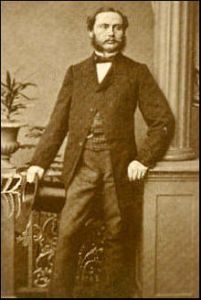 Maximilian Prince of Thurn & Taxis
Maximilian Prince of Thurn & TaxisBut there was a hitch. The proverbial fly in the ointment was (yet another Maximilian) the King of Bavaria and Helene’s uncle. The problem was that the Thurm and Taxis family were immensely wealthy but not noble – or not noble enough to aspire to the hand of a member of the royal family.
This was where it paid to have powerful relatives. Of course the King of Bavaria was pretty powerful, but he was a lightweight compared to the Emperor of Austria. Ludovika wrote to her daughter, Elisabeth (Sisi) Empress of Austria, appealing to her to ask the emperor to intervene, which he duly did. King Maximilian bowed before the superior weight, and Helene married her prince.
Helene had four children before her husband became seriously ill with a kidney problem and died at the age of thirty-five. After his death Helene dedicated herself to raising her children and charitable works.
Ironically, she is thought to be the only one of the five Wittelsbach sisters to have a happy marriage.
Meet them all here:
https://www.amazon.com/Gilded-Cage-Susan-Appleyard-ebook/dp/B01GW89Z8G


June 25, 2016
Book Corner: Edward IV Glorious Son of York by Jeffrey James
A review of my favourite king by Sharon Bennett Connolly
 History... the interesting bits!
History... the interesting bits!
Few English monarchs had to fight harder for the right to rule than King Edward IV – Shakespeare’s glorious son of York. Cast in the true Plantagenet mould, over six feet tall, he was a naturally charismatic leader. Edward had the knack of seizing the initiative and winning battles and is free from the unflattering characterisations that plagued his brother, Richard III, having been portrayed as a good-looking and formidable military tactician. Described sometimes as reckless and profligate, all sources remark on his personal bravery. In the eleven years between 1460 and 1471 he fought five major battles in the Wars of the Roses. Three of them – Towton, Barnet and Tewkesbury – rank among the most decisive of the medieval period.
This is a history of Edward IV’s struggle to gain and retain the kingship of England during a period of sustained dynastic turmoil during the Wars of the…
View original post 739 more words


June 23, 2016
My tbw list
Many people, writers and readers alike, have a tbr list. I have a tbw list – a to be read list. It’s quite short, only 5 stories clamouring for attention. Two are set in the 19th century, two in the fifteenth century and one in the fourteenth century. The latter is tempting because I wrote 200 pages before putting it on the metaphoric shelf where it has languished for a couple of years gathering metaphoric dust and cobwebs. The problem is that one of the nineteenth century stories is the one clamouring loudest for my attention. What to do? Well, I thought about it for approximately a week and a half and decided the fourteenth century could wait in limbo a little while longer because my heart and mind directed me to the nineteenth century. So, after an appropriate fanfare ta-da! I have decided to write a book about Ludwig II King of Bavaria. It will be a challenge, yes, but what a terrific story.
I would like to put in a picture of Ludwig here but the subjects of my pictures tend to lose their heads when appearing on my facebook page.


June 13, 2016
New Book
I am so happy to announce that my new book In a Gilded Cage is published and available on Amazon. This is a departure from my Medieval books. Set in the nineteenth century, it is about Empress Elisabeth (Sisi) of Austria and her struggle to find a place for herself in a hostile and alien court. Please check it out at:
https://www.amazon.com/Gilded-Cage-Susan-Appleyard-ebook/dp/B01GW89Z8G
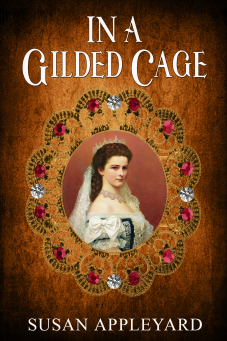


June 8, 2016
A Conversation with Author Susan Appleyard
Today in the library we have author Susan Appleyard who has dropped by to share some insights into her life as an author. Susan is the author of : Queen of Trial and Sorrow, This Sun of York, The Relentless Queen and The First Plantagenet.
Hello Pam and everyone. Thanks for the opportunity to introduce myself and talk about my work.
I was born in England, which is where I learned my love of English history, and emigrated to Canada in the mid-seventies, so I am very much a Canadian but with a Yorkshire accent. I’m fortunate to be able to spend six months in Canada, with my 3 children and 6 grand-children, and six months in Mexi co with the sun and sea and margaritas on the beach. (No prizes for guessing which months are spent where.)
co with the sun and sea and margaritas on the beach. (No prizes for guessing which months are spent where.)
I had two books traditionally published, before my burgeoning career went into…
View original post 429 more words







